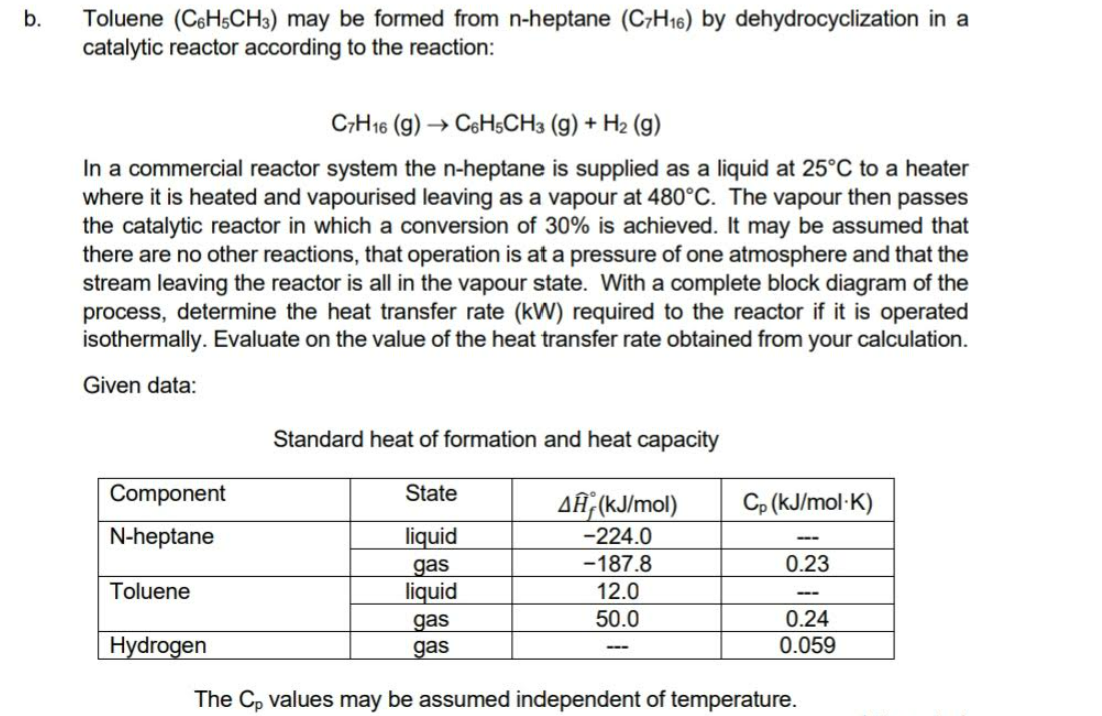Answered step by step
Verified Expert Solution
Question
1 Approved Answer
b. Toluene (C6H5CH3) may be formed from n-heptane (C7H16) by dehydrocyclization in a catalytic reactor according to the reaction: C7H16 (g) C6H5CH3 (9) + H2

Step by Step Solution
There are 3 Steps involved in it
Step: 1

Get Instant Access to Expert-Tailored Solutions
See step-by-step solutions with expert insights and AI powered tools for academic success
Step: 2

Step: 3

Ace Your Homework with AI
Get the answers you need in no time with our AI-driven, step-by-step assistance
Get Started


